Intro.
I cut the cord as they say back in 2015 and have completely taken control of my TV setup. Being somewhat of a geek, friends have asked me a few times over the years about what I do for TV. So, here it is; I'm laying out my setup. There were two actual phone calls that started this ball rolling:
Call #1 - Time Warner Cable (now Spectrum) had a contract spat with NBC and stopped carrying that network. Of course both sides accused the other of being unrealistic in their contract negotiations. The way I saw it, I was paying my money to the cable company, not NBC, so I expected them to resolve it. As the calendar would have it, this spat included a weekend when the Packers were playing. So many of us Packer fans were going to miss seeing the game. That's a quick way to upset a lot of Wisconsinites. To appease us fans, Time Warner invited us to stop by their office and pick up an antenna that we could attach to our TV. So I did just that. I attached the antenna and watched the game. And in the process, I also found all of the other channels that I could get for free. Hmm.
Call #2 - At some point after the above situation, realizing that my cable bill just kept increasing, I called the cable company and told them I wanted to cancel. Instead of actually cancelling, they transfered me to a "customer retention specialist", who not only backed off on the price increase but offered me a rate that was lower than what I was paying (which kind of pissed me off even more). When I resisted and mentioned the possibility of missing football games, she told me about the free antenna offer. I told her, "Yes, I know about that. I already got the antenna and I've decided to just use that for TV. Thank you for the free antenna."
Note also that the biggest problem with these special offers is that they are "introductory" offers for a limited time. Therefore, you're gonna be back in the same situation in a year or two when the offer ends. Or there will just be a normal rate increase. It's just a never-ending cycle.
So, while I immediately eliminated my monthly cable bill, one big misconception is that I no longer pay for TV. If you're intending to save money, I don't know if cancelling cable will ultimately do that for you. Maybe it will, depending on your needs. In my case, I just wanted control. I hated those two-year contracts that locked me in. Yes, the cost was of course a big concern, but the main thing I needed was control.
So for me, I started this whole process by figuring out what I can get for free (no monthly/yearly fee). I kind of viewed that as a foundation upon which I'll create my whole TV setup. Then I figured out what other services I'll need that might have a cost attached.
Now, let's be clear at the outset. I'm not telling you all this to convince you to do what I did. We all have our tastes in TV and our needs vary. If you need to pay to get what you want, then pay. I'm just explaining what I did and why.
Antenna.
My first step in this whole process was to acknowledge that free TV is available with an antenna and to get it. You may hear this referred to as OTA (over-the-air). But, before you to this, realize that a good solution for one person may not work for another. Generally, what works for your next door neighbor should also work well for you, but you have to test it.
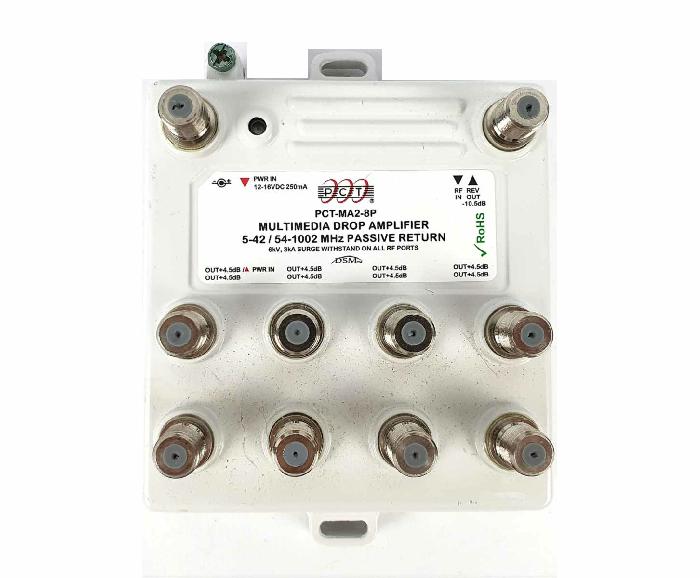 In my case, I first used one of those small antennas, attached it to the back of my TV, scanned for channels,
and thought, hmmm, all free. Cool.
However, I have six TVs (yeah, I know, don't judge) and I wanted a single solution for all of them.
Since I already had the RG6 coaxial cable running throughout my house that was used for cable TV,
I bought a more powerful antenna and installed it at the highest point inside my attic.
I ran a cable from there to a central point in my basement and connected it to a
PCT-MA2-8P 8-port amplified splitter.
From that splitter, I connected each of the cables that ran to the various TV locations in the house (I also had to run a couple more cables myself).
In my case, I first used one of those small antennas, attached it to the back of my TV, scanned for channels,
and thought, hmmm, all free. Cool.
However, I have six TVs (yeah, I know, don't judge) and I wanted a single solution for all of them.
Since I already had the RG6 coaxial cable running throughout my house that was used for cable TV,
I bought a more powerful antenna and installed it at the highest point inside my attic.
I ran a cable from there to a central point in my basement and connected it to a
PCT-MA2-8P 8-port amplified splitter.
From that splitter, I connected each of the cables that ran to the various TV locations in the house (I also had to run a couple more cables myself).
Two tips if you end up doing something similar:
- If you run cable, be sure to use a good quality shielded cable to prevent interference from other devices, metal pipes, etc.
- Don't just use a basic splitter. Use an amplifier (which requires A/C power) so that you get the best signal to all your TVs.
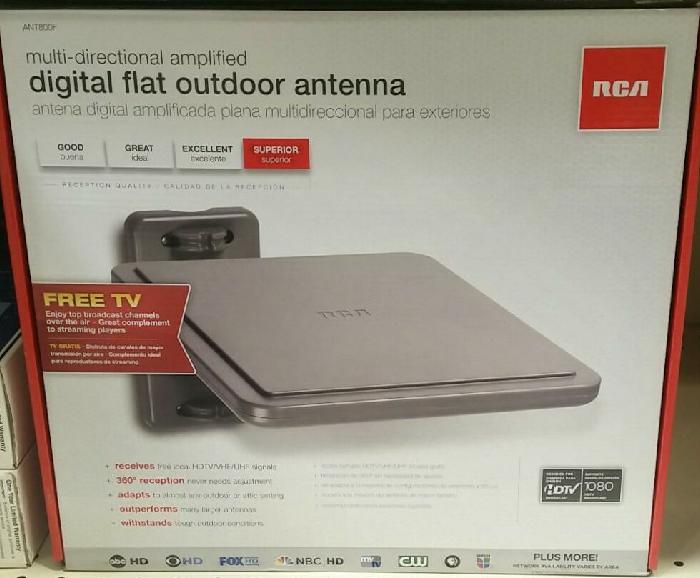 It worked, but while I was watching football games,
the picture would occasionally get pixelated (during an important play of course) and then it would come back fine.
This frustrated me.
So I then created the solution that I'm still using today.
I bought an RCA ANT800F outdoor antenna,
mounted it on my roof, and ran a cable down to the splitter in my basement.
It worked, but while I was watching football games,
the picture would occasionally get pixelated (during an important play of course) and then it would come back fine.
This frustrated me.
So I then created the solution that I'm still using today.
I bought an RCA ANT800F outdoor antenna,
mounted it on my roof, and ran a cable down to the splitter in my basement.
If you put an antenna on your roof, be sure to point it in the right direction, toward the closest broadcast towers, so that you get the best signal. Here in northeast Wisconsin, all of the towers are installed on Scray Hill, just east of De Pere. I recommend the following two sites to help you find the location of your local broadcast towers along with the free channels you'll receive:
Free Channels.
Once you setup your TV, the channels you'll receive vary by market. Most areas will get the major networks (ABC, CBS, FOX, NBC, PBS). Here in northeast Wisconsin, we get 43 free channels! My favorite is Story Television, very similar to History. I also like Antenna TV (that's the name of the channel) because I can watch Johnny Carson every night at 10:00pm, just like the old days.
All modern TVs also have a nice schedule grid. Just press the little "Guide" button and see all of the channels along with what shows are on now and coming up. One little-known feature is that if you scroll forward and see a show you want to watch, say in a couple of hours, just click on it and you can schedule your TV to switch channels automatically so you don't miss it.
Samsung TV+
Samsung TV+ is an interesting product, available on all modern Samsung TVs. It gives you hundreds (yes hundreds) of free channels. The best part is that those channels are just tacked on at the bottom of the above-mentioned grid. Just scroll down through your broadcast channels and when you get to the end, keep going. There are hundreds more. As of February 2025, I have 454 such channels! No app to install, no device to plugin. All free.
I love the new Letterman TV channel. It's not just old episodes like Johnny Carson. Instead, they compile clips into highlight shows, for example, Adam Sandler appearances. These are also some of my favories:
- 24/7 news & weather - when a major event happens, I can instantly watch coverage; no need for CNN
- several comedy channels - all comedy, all the time
- many kids channels, cartoons, educational, etc
- Supermarket Sweep - my wife and sister-in-law were on the Aug 31, 1992 episode, and won the grand prize!
- Dateline NBC - can't get enough of Keith Morrison
- music channels - just select your genre to fit the mood (pop, rock, easy, dinner, etc)
- over 450 channels
The big catch is that this is only available on Samsung TVs. And you have to have a solid internet/wifi connection.
Apps With Free Channels
There are a number of apps that you can install and use for free. Each app has many channels in any category you can think of. I recommend that you install each of these apps and try them out:
- FreeveeTV
- Pluto TV
- Sling Freestream
- Tubi
- YouTube (yes, install the app on your TV)
There are also some services where you can just click and watch TV instantly on your computer or phone, including these:
- Pluto TV
- Sling Freestream
- TV Garden (hundreds of channels from around the world)
So Many Free Channels
Once you have all of the above solutions in place, perhaps this is all you need. It's amazing how many TV channels are available for free.
Sports.
Often people ask me what I do for sports. Obviously, everyone's got their own needs. When I cut the cord, I lost ESPN where I used to watch Monday night football and tennis. If you think of it, those two needs aren't too great. But if you watch sports all the time year-round, then this might be a deal breaker for you.
So for Monday night football, I just don't watch it. After all, that's what the NFL wants. If you don't have ESPN, then they don't want you watching Monday night football. As for tennis, ABC broadcasts the mens Wimbledon finals on Sunday afternoon, after we already know who won. But that works for me. I also scrounge to see what I can see for the other major tournaments.
With my wife being a Calfornia girl, she likes to watch the Anaheim Angels games. So for that, we subscribe to MLB TV. Now, this runs about $140 per year, but it's pretty cool that we can watch every Angels game.
All other sporting events that we watch are available for us on the free network channels.
HDMI Devices.
What's an HDMI device for? Simply put, it allows you to install apps from various sources (Netflix, Amazon, YouTube, etc) and then watch those apps on your TV.
But before we get going too far, you may not need one. All modern smart TVs allow you to install apps, so try to install the ones you need and you might be able to just skip this info. On the other hand, if you have an older TV that might not support the apps you need or might not allow you to install apps at all, as long as it has an HDMI port on the back, you're all set.
In my case, I have six TVs in the house. And even though most of them are newer and allow me to install apps, I also like having an identical experience on each one. So, having more than one HDMI device gives me that.
I've used three such devices:
- onn TV - I got this for about $20 at Walmart. I have two of them and it's my favorite.
- Amazon Fire TV Stick - This one's about $50 at Amazon. I have two of them and I like this one too.
- Roku TV - This is about $20 at Amazon. I had several of these over the years, but the remotes didn't work well (even when brand new) so I scrapped them.
Right off the bat though, I want to be sure the cost of these devices is clear. There is no monthly cost to own one of the above devices; just the one-time purchase price. There is also technically no cost to install apps on the above devices, however, there is indeed a monthly cost for many of the services. For example, you can install the Netflix app for free, but in order to sign in, you need a Netflix account, which is not free. Yeah I know it sounds weird, but I want to be sure this is clear. On the other hand, you can also install apps like Pluto TV, as I mentioned above in the "Free Channels" section; this is free to install and free to use; no monthly fee.
So, how do these devices work? It's quite simple actually. It's a small hand-sized device that plugs into an HDMI port on the back of your TV. You switch the input on your TV to this HDMI device, connect the device to your wifi, and install any apps you want.
These are some apps that I have installed:
Angel Studios, Epoch TV, Freeplay, Freevee, Netflix, Pluto TV, Prime Video, Starz, Sling TV, Tablo, Tubi, YouTube, and XTV.
Most of these apps I don't pay for. But services like Netflix and Prime Video definitely have their fees.
What About Traveling?
Some folks wonder if you can take these devices with you. Yes, absolutely. When you travel, just unplug the device from the back of your TV and plug it into the TV in your hotel room. Now, as I said above, you do need a solid internet/wifi connection. So it's possible that the hotel you're staying at may not have such a connection, but you can give it a try. For security purposes, it's much better to do this, than to sign into your Netflix account on someone else's TV.
Tablo.
Tablo answers the question, "how can I record the TV shows that I get via antenna?" Tablo is perhaps the most interesting device I have. This is how it works. It connects to both my antenna and my network. It receives all of the digital TV channels via antenna (free), allows me to record them, then I can watch the shows via the app.
There's another pretty cool feature. You can also watch all of your antenna channels live via the Tablo app. This is very helpful in the following two situations:
- You have a TV on one side of your house but it can't reach your antenna cable. You can watch the Tablo app, which talks to the Tablo device (which is indeed connected to your antenna) via wifi.
- You're out in the community at an event (or anywhere in the world), and you want to watch a TV show. Just open the Tablo app on your phone which then connects to the Tablo device back at home; this means you can watch all of the channels that are available in your house along with any recorded shows. For example, if you're out of state and therefore can't watch your favorite football team, just use Tablo to watch the TV channels from back home.
The channel guide features on Tablo are quite nice. You can select "Movies", for example, and see all of the movies that are coming up. With 43 channels here in northeast Wisconsin, there are good movies popping up all the time. So I just set them to record and basically build my own little movie library, all free, which I can watch at any time.
Now, I happen to have Tablo's legacy device, the older one. I pay a subscription fee for an extended channel guide, but this is optional. The legacy device also has a cool feature called "commercial skip"; just like it sounds, when I watch a recorded show, it automatically skips commercials. But I they've eliminated this feature in the new devices. Tablo says that their new devices have no fees.
Sling TV.
Sling TV is a service that I used for a few years but not any more. Like other services, it's an app that you download and you need a subscription to use. But instead of movies like Netflix, it provides regular TV channels like ESPN, History, TBS, TNT, etc. So, if those are channels that you feel you still need (i.e. if you like the NBA), Sling might be a good solution for you.
The main reason that I liked Sling was for ESPN (Monday Night Football & major tennis tournaments) and History. When I started, I paid about $20/month. But their prices kept creeping up over the years (no surprise) and I continuously reconsidered how much I wanted to pay for only a couple of channels that I regularly watched. Eventually I just cancelled.
They have a couple of plans (orange and blue) that have different channel line-ups. So perhaps they'll have something that fits your needs pretty well.
They also has a service called Sling Freestream, where you can watch 600+ channels for free.
Photos.

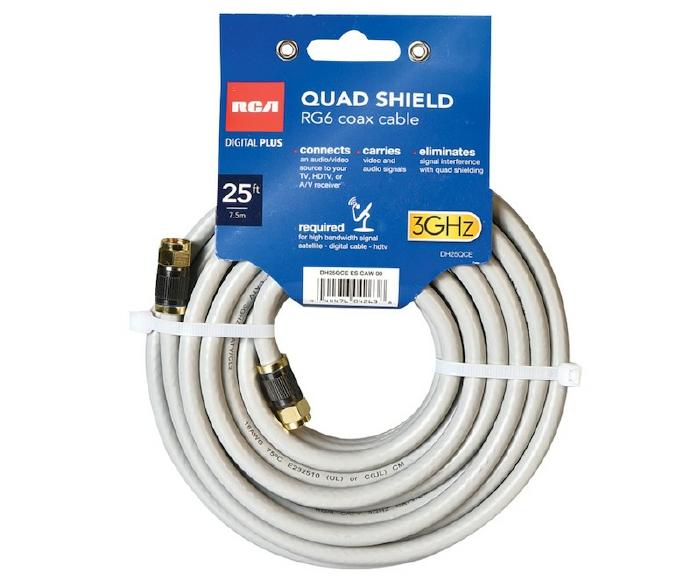


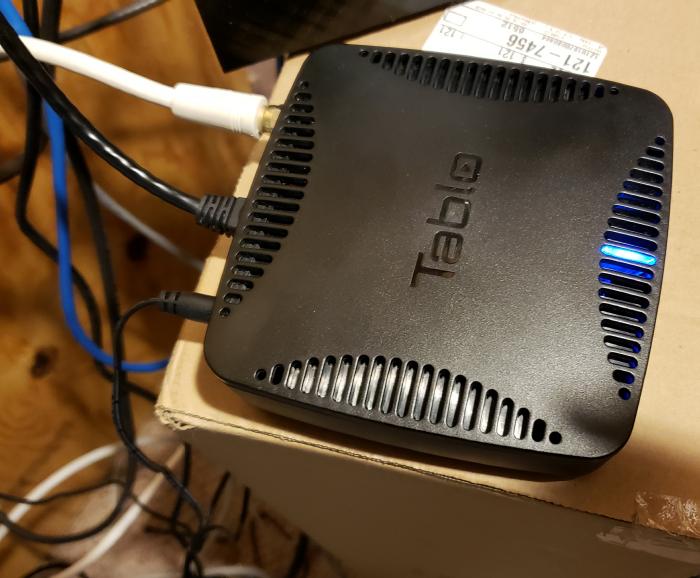
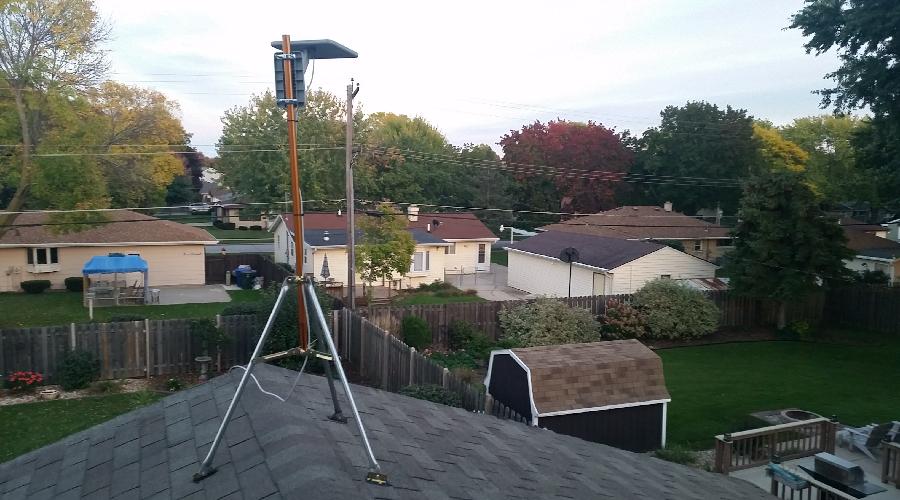
Resources.
Perhaps these resources will be helpful, perhaps not.
Apps with free TV.
- Freevee
- Pluto TV
- Sling Freestream
- Tubi
- YouTube (videos)
Watch Now.
If you want to watch TV right now, here on the web, either on your computer or your phone, for free, here a couple of links that'll get you going:
- Pluto TV
- Sling Freestream
- TV Garden (hundreds of channels from around the world)
Seriously, the above links will have you watching TV (both scheduled programming and on-demand movies) in literally seconds, with no account, no credit card, no kidding. They are funded by commercials like regular OTA TV.
Summary.
Today, 10 years after I cut the cord, I'm still paying monthly fees, perhaps more than I was before. But I have control! It's the first sentence on this web page, I have taken control. I just can't stand being jerked around by any company, much less cable companies. No more. So this is what I currently have:
- rooftop antenna (40+ free digital channels)
- Samsung TV+ (450+ free digital channels)
- onn TV (device plugged into each of my TVs), with following apps:
- Tablo (DVR of all 40+ antenna channels)
- Pluto TV (free TV stations, on-demand movies, etc)
- Freevee (free TV stations, on-demand movies, etc)
- Sling Freestream
- Tubi (free TV stations, on-demand movies, etc)
- YouTube (free videos, movies, etc)
- *Netflix (movies, documentaries, etc)
- *Prime Video (movies, documentaries, etc)
- *MLB.TV (all games of your favorite team)
* monthly/yearly fee
I have dozens of free digital OTA channels that will never go away, not in my lifetime anyway. And in actuality, the number of stations has more than doubled since I made this switch. Plus, and this is important, the channels are those that interest me, channels that I actually watch. It's only getting better.























